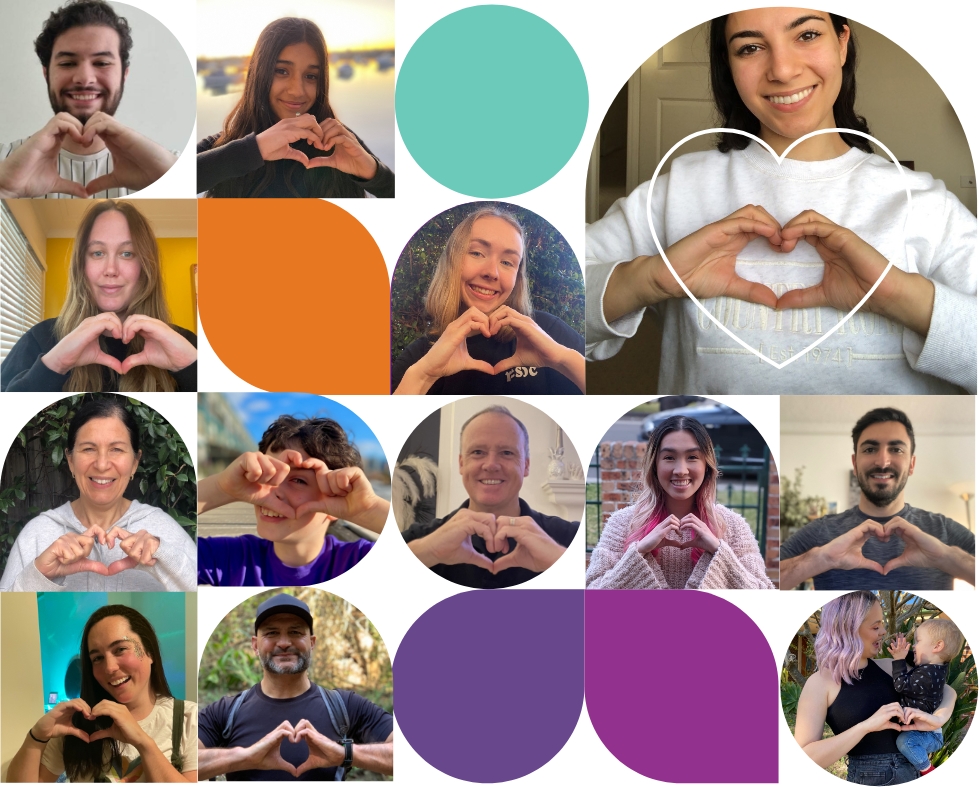“I was afraid to pick her up at first if I'm being honest,” Erica, mum of six-month-old Ella says. After a textbook pregnancy and a planned caesarean section, Ella was not born a perfectly healthy baby as we expected. Born with epidermolysis bullosa (EB), Ella was born with skin missing from her right knee and both feet.
“You could tell something was wrong straight away... We had the dermatology team within the hour, and straightaway they bandaged up those open wounds to make sure that they were protected,” Ella's dad, Tom recalls.
So began Erica and Tom's critical wound care training for their newborn baby.
EB is a gene mutation that results in the absence of a crucial protein responsible for anchoring the layers of the skin together. Without this “glue”, layers of skin separate and peel away from any friction.
Rebecca, the Epidermolysis Bullosa Clinical Nurse Consultant (EB CNC) at Sydney Children’s Hospital, Randwick, supports children living with EB and their families. Her list of duties to support patients and families is extensive.
“There are usually one or two patients booked either in Outpatients or the Medical Day Unit. I see the inpatients and any of the kids coming through for surgery - I troubleshoot and then I follow them through theatres and recovery to help with preventative care.
“There's some research involved and a lot of outreach. Phone calls for my patients who live all over New South Wales. If those kids need to access any care locally, often their health care providers will need support on how to carry out their reviews or medical services without causing trauma. So, I provide a lot of EB education and a lot of specialist support to other health care providers in the community,” Rebecca says.
Ella's future will be one of constant consideration and prevention. “At home, parents spend a lot of time working out which shoes, which shorts, which backpack, what type of clothing will not cause extra friction. Babies with EB will wear their clothes inside out. School aged children often find the type of clothing that has softer seams or a looser fit - A style of clothing that's not going to cause friction,” Rebecca says.
With an older son, Tom and Erica were comfortable raising a newborn. But the additional things to learn for a baby with EB can feel overwhelming.
“Every baby has their own distinct cry: a feed cry, a tire cry, a toilet cry - And [for Ella] we had to learn the pain cry. When we hear the pain cry ... we stop what we're doing, strip her down, do a head to toe and see if we can find out what's causing the pain.
“Then you also have to tend to all the spot blisters and then you've got complex wound care. That is the hardest thing... Learning critical wound care in two and a half weeks, and as she grows, every wound is changing,” Tom says.


Tom and Erica spend two to three hours every night dressing Ella's bandages.
“Six months on, we're confident on complex wound care. And we know what to do. We know what to look for. But it's still extremely challenging to fit it into the day. We're doing wound care and bandaging at 10:00 at night because it's the only time she'll allow it, when she's fast asleep at night,” Erica says.
For Erica, one of the most profound moments came when Rebecca offered a simple reassurance: “You're going to injure her. It's no one's fault, it's just going to happen." These words served as a necessary reminder of the unpredictable nature of EB, urging Erica to focus on prevention while embracing the inevitability of occasional setbacks.
“I think that's one of the tricky things for us, is working out when we can let her push limits and when she has to pull back. It'll be a lot of us kind of being willing to take a risk to let her take a risk so that she can still have as many experiences as possible,” Erica says as she looks to Ella's future.

“For anyone who is thinking about donating to the Appeal, your donation helps Ella and all the other children, to have that fulfilled life. To be able to experience things that they might not be able to without that funding or that service. That support is helping us have more family time,” Tom says.
Your donation could help provide more families living with rare diseases with vital support to ensure these kids can be a child first, and a patient second.
Donate to Sydney Sick Kids Appeal by visiting schf.org.au or calling 1800 770 122.












